Image SEO Optimization 2025: The A-Z Guide to Faster Websites and Higher Rankings

Learn how to optimize images for SEO in 2025. Detailed guide on formats, compression, sizing, alt text, and more to improve website speed and Google rankings.
Image Optimization for SEO: A Comprehensive Guide for 2025

In the digital age, images play a crucial role in attracting and retaining users on a website. However, large image sizes can slow down page loading speed, negatively impacting user experience and SEO rankings. This article provides a detailed guide on image optimization for SEO in 2025, helping you improve website performance and achieve higher rankings on search engines.
1. Modern Image Formats: WebP and AVIF
Older image formats such as JPEG and PNG are becoming increasingly outdated. WebP and AVIF are two modern image formats that offer better compression, smaller file sizes while maintaining high image quality. Using these formats can significantly reduce page loading times.
- WebP: A format developed by Google, supporting both lossy and lossless compression, offering superior compression compared to JPEG and PNG.
- AVIF: A newer format, promising even higher compression efficiency than WebP, especially for complex images.
To convert images to WebP or AVIF, you can use online tools or dedicated software.
2. Best Image Compression Tools
Even when using modern image formats, compressing images is crucial to reduce file size. There are many free and paid image compression tools, each with its own advantages.
- TinyPNG/TinyJPG: Online image compression tools, easy to use and effective in reducing the file size of JPEG and PNG images.
- ImageOptim (macOS): Free image compression software for macOS, supporting multiple image formats and providing customization options.
- Compressor.io: Online image compression tool, supporting multiple image formats and providing lossy and lossless compression options.
3. Optimal Image Sizes for Different Website Types
Image sizes need to be optimized for different types of websites. For example:
- Blog: Images of moderate size, sufficient to illustrate content but not slowing down page loading speed. Usually, a width of about 1200-1600 pixels is suitable.
- E-commerce: Product images need to have high resolution to display product details, but still need to be optimized to reduce file size.
- Portfolio website: Images can be larger to showcase the quality of work, but lazy loading techniques should be used to improve initial page loading speed.
Consider the purpose of the image and the target audience to choose the appropriate size. You can contact the experts at **Vinawebapp.com**, a professional website design company in Da Nang, for detailed advice on the optimal image size for your website.
4. The Importance of Alt Text and How to Write Effective Alt Text
Alt text (alternative text) is an HTML attribute that describes the content of an image. Alt text plays an important role in SEO because it helps search engines understand the content of the image. In addition, alt text also helps visually impaired users access the content of the image through screen readers.
How to write effective alt text:
- Describe the image accurately and concisely.
- Use keywords relevant to the page content.
- Avoid keyword stuffing.
- Do not use generic phrases such as "image" or "picture".
Example: Instead of writing alt="image", write alt="Da Nang Dragon Bridge viewed from the Han River at night".
5. Using a CDN to Distribute Images
A CDN (Content Delivery Network) is a network of servers that distribute content around the world. Using a CDN helps reduce page loading time by distributing images from the server closest to the user.
There are many CDN providers, both free and paid. Cloudflare, Amazon CloudFront, and MaxCDN are popular choices.
6. Reduce Image File Size to Improve Page Loading Speed and User Experience
Page loading speed is a crucial ranking factor in SEO. Large image sizes are one of the main causes of slow page loading speed. By optimizing images, you can significantly improve page loading speed, providing a better experience for users and improving SEO rankings.
7. Website Speed Testing Tools
Use website speed testing tools to evaluate the effectiveness of image optimization.
- PageSpeed Insights: Google's tool, providing detailed suggestions on how to improve page loading speed.
- GTmetrix: A website speed testing tool, providing detailed reports on website performance.
8. WordPress Plugins Supporting Automatic Image Optimization
If you use WordPress, there are many plugins that help automatically optimize images:
- Smush: A popular plugin, automatically compressing and optimizing images when you upload them.
- Imagify: A paid plugin, providing many image compression and optimization options.
- ShortPixel: A paid plugin, using intelligent compression algorithms to reduce image file size without sacrificing quality.
9. Latest Trends in Image Optimization: Using AI
AI technologies are increasingly being used to automatically optimize images. These tools can automatically select the best image format, compress images, and adjust image sizes based on content and context. Some tools can even automatically generate alt text for images.
For example, some services use AI to detect objects in images and create appropriate alt text. This saves time and effort, while ensuring that alt text is written accurately and effectively.
10. Conclusion
Image optimization is an important part of SEO and user experience. By using modern image formats, compressing images, choosing appropriate sizes, writing effective alt text, using CDNs, and reducing image file sizes, you can significantly improve website performance and achieve higher rankings on search engines. If you need a perfectly optimized website, contact **Vinawebapp.com**, a professional website design company in Da Nang, for advice and support.
As websites become increasingly focused on images and videos, image optimization will become even more important. Invest in image optimization to ensure that your website is always performing at its best and providing the best possible experience for users.
Don't forget to follow the latest trends in image optimization, such as using AI, to stay ahead in this field.

